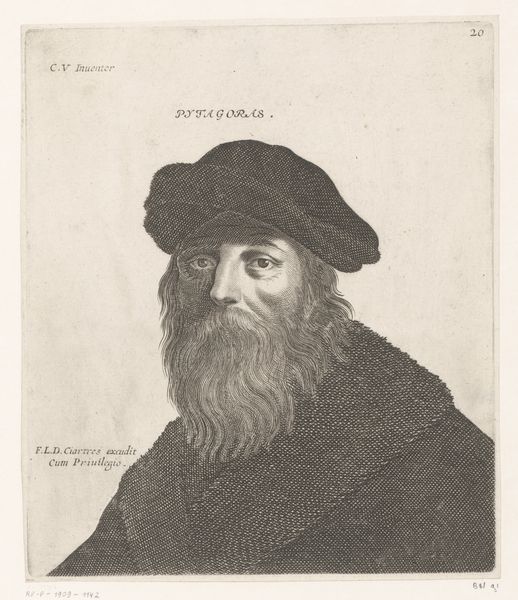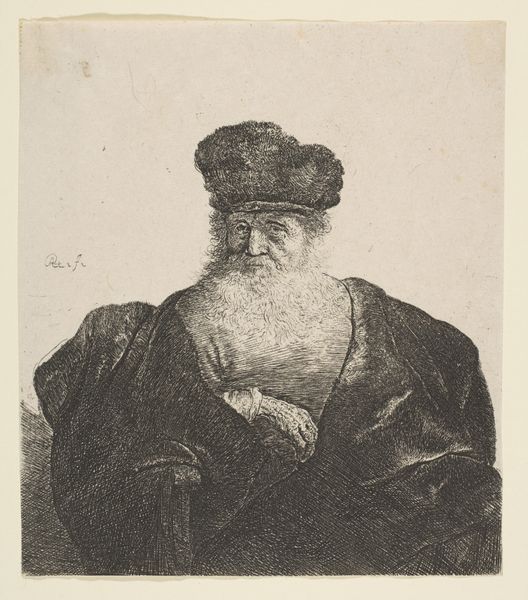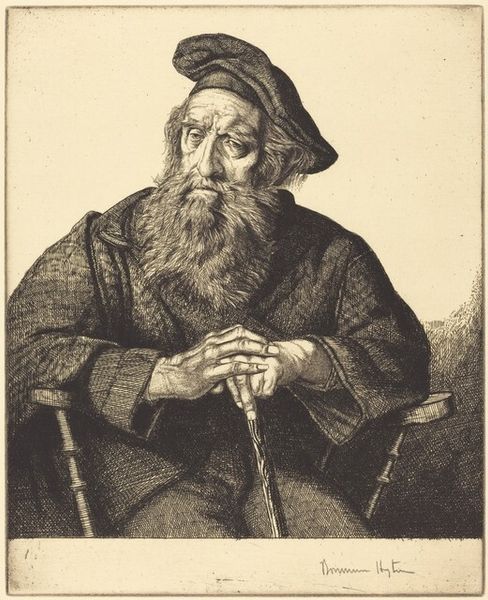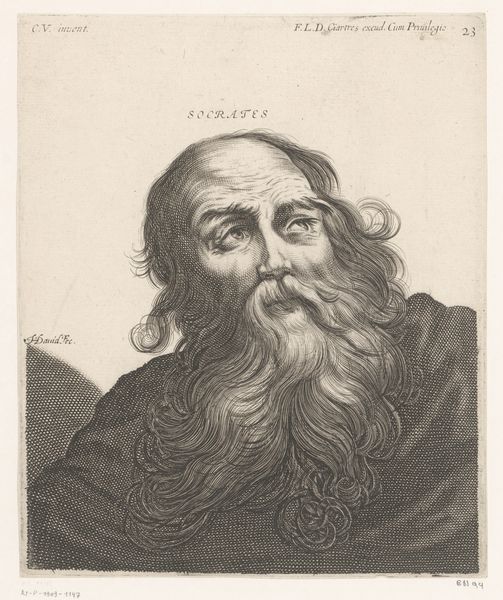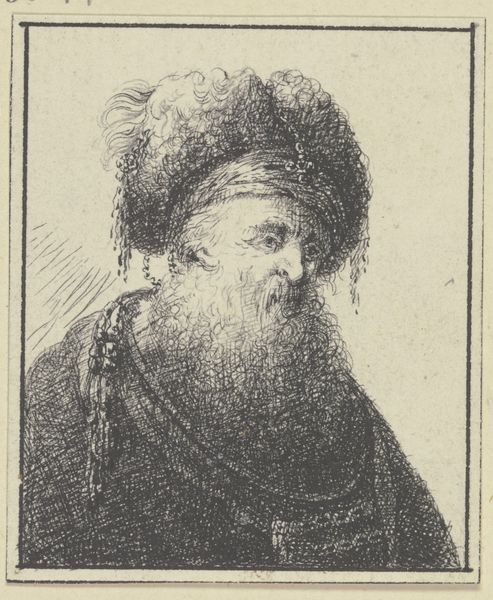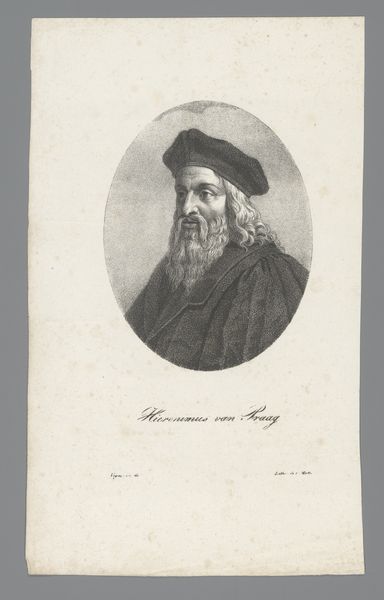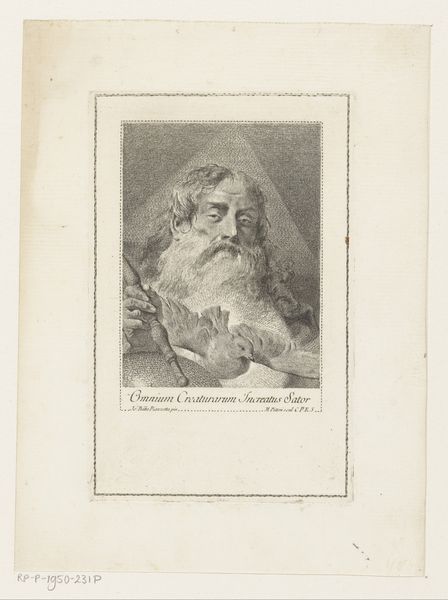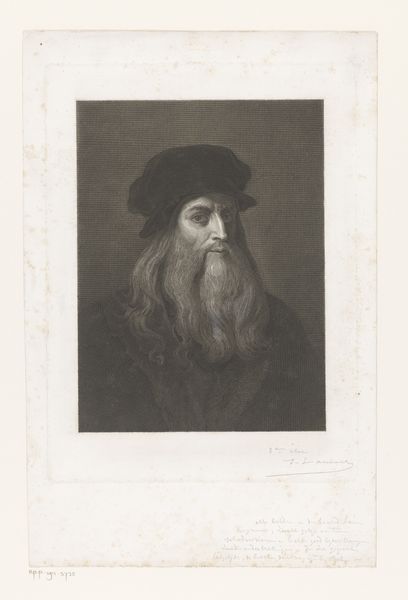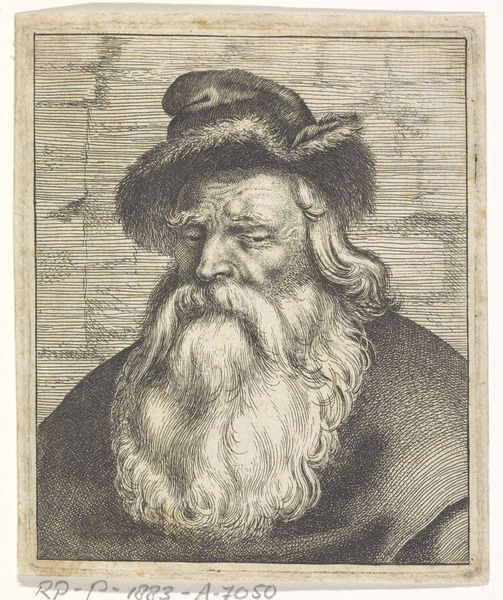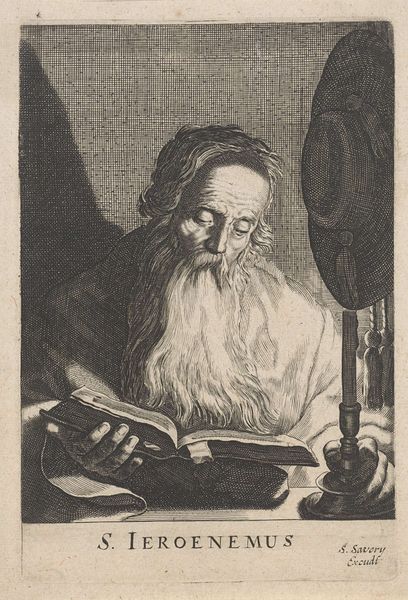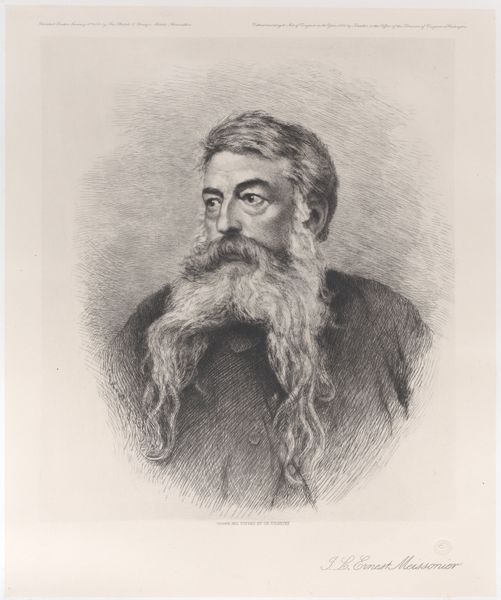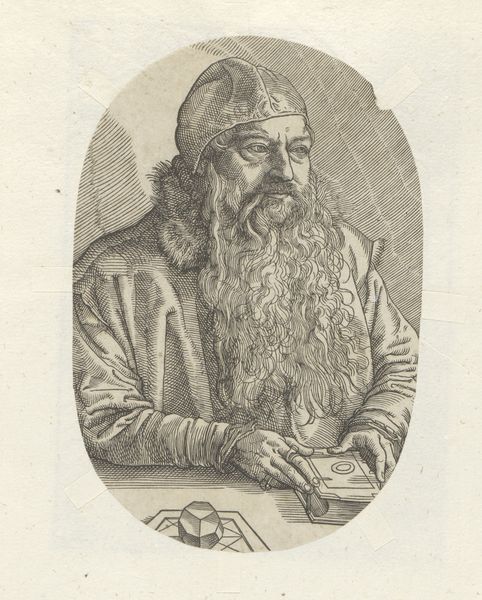
engraving
#
portrait
#
baroque
#
old engraving style
#
figuration
#
portrait reference
#
portrait drawing
#
history-painting
#
engraving
Dimensions: height 222 mm, width 185 mm
Copyright: Rijks Museum: Open Domain
Editor: Here we have "Portret van Empedocles," an engraving created sometime between 1615 and 1647, now residing in the Rijksmuseum. There's a pensiveness to the philosopher's upward gaze that really draws me in. What do you see in this piece, in terms of its symbolic value? Curator: What I see is a very conscious effort to visually represent the archetype of the wise philosopher. Consider the beard, its length and wildness speaking to years spent in contemplation, a tangible symbol of accumulated knowledge. Notice the direction of his gaze as you mentioned - heavenward. Is it towards enlightenment, perhaps? It reinforces Empedocles’ reputation as a man connected to higher truths. Editor: So, you’re saying even seemingly simple details like the beard contribute to a larger, almost universal, idea of wisdom? Curator: Precisely. And think about engraving as a medium. The lines create texture and depth, giving a sense of gravitas to the figure. Engraving was, after all, the chosen medium for disseminating images of authority, both secular and religious. Why do you think that might be? Editor: Maybe because of the precision, the meticulous detail conveyed through the medium of engraving that adds weight? Curator: Exactly. The symbolic associations of engraving itself – precision, permanence, and authority - elevate Empedocles from mere mortal to an almost mythic figure embodying timeless knowledge. These aren’t arbitrary choices, but deliberate ways of visually constructing and perpetuating cultural memory. Editor: I never considered how the medium itself contributes to the meaning. I see so much more in this now! Curator: Indeed! Every element works to solidify Empedocles’ image in our collective cultural consciousness.
Comments
No comments
Be the first to comment and join the conversation on the ultimate creative platform.
